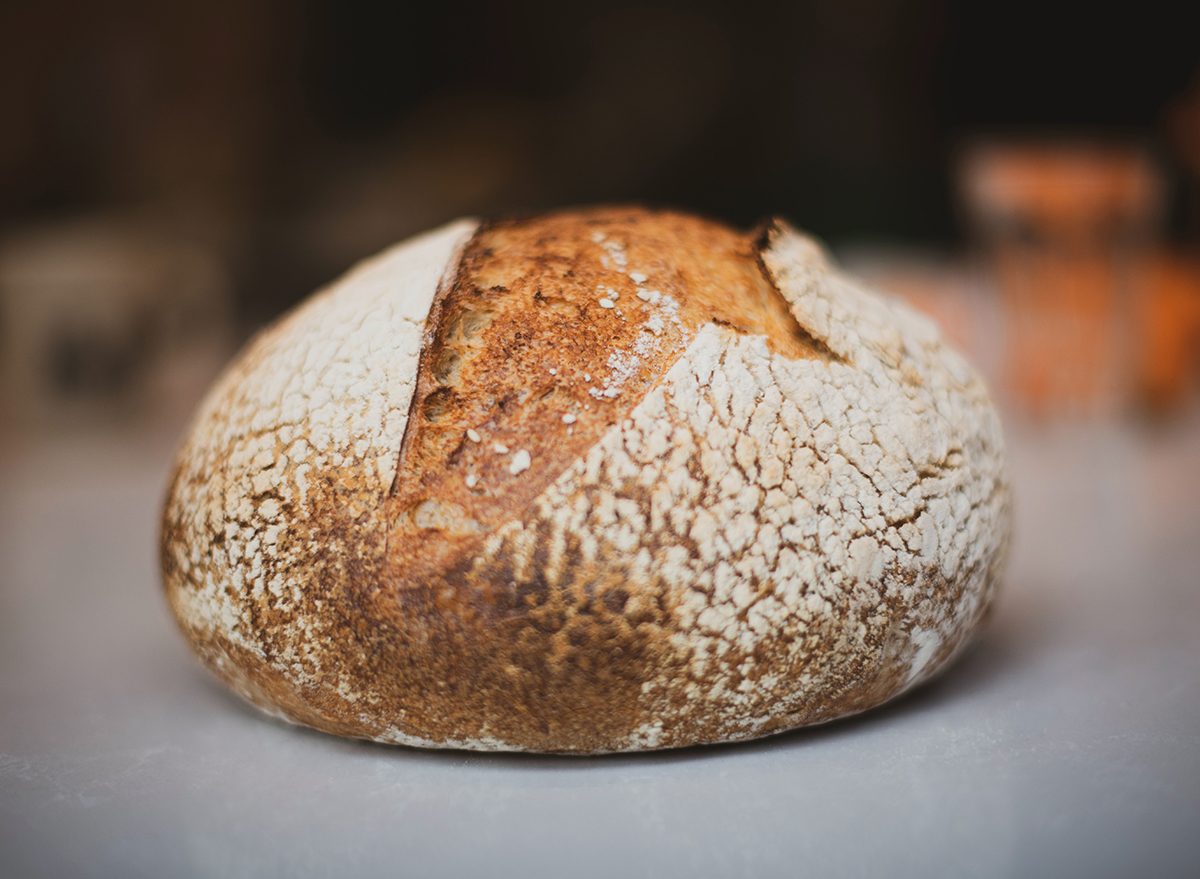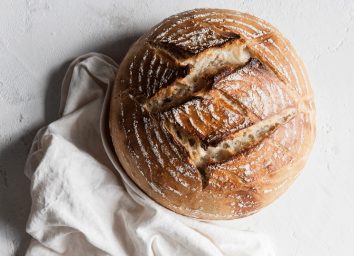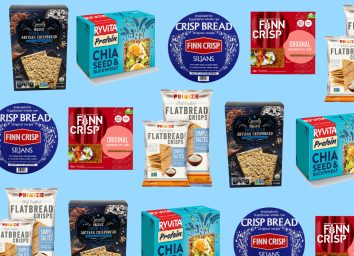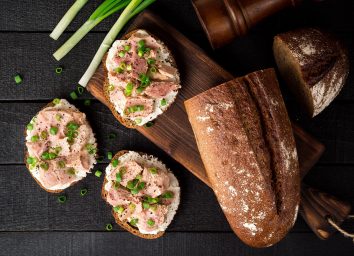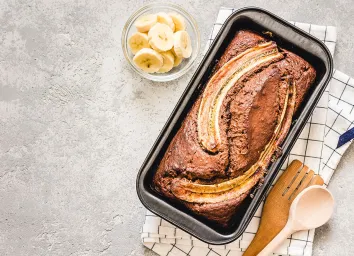Sourdough is the Clear Winner of Make-at-Home Quarantine Bread
When I open up Instagram these days, I seem to see one of three things: Netflix queues, comfy clothes, and sourdough bread. While the first two make sense for spending endless hours quarantined at home, the latter makes me laugh. It's like the world finally realized how easy it is to make sourdough at home, so they're hopping on the sourdough train.
Being an avid baker of sourdough myself, I thought it was funny how flour is suddenly scarce at grocery stores as everyone's been getting into baking bread. Why so much attention to sourdough lately? With a little digging, I came across a general theme of why everyone's been so into baking sourdough at home during quarantine.
People are baking sourdough as therapy.
While loaves of sourdough seem to be taking up my feed, it seems making sourdough bread has actually been a way for people to distract themselves from constantly scrolling on their own phones. Megan Triefenbach, 24, an avid sourdough baker, says she's been trying to opt for screen-less activities while stuck at home, and baking bread has become one of her favorite outlets.
"Breadmaking is such a contemplative and sensory-enriching experience, and it helps to take my mind off of the current situation," says Triefenbach. "In the midst of a sudden lack of routine and structure, it has given some purpose and direction to my days. I've recently started delivering loaves to my friends' doorsteps (I've been jokingly calling myself the Sourdough Stork on Instagram), and seeing the messages and videos of my friends enjoying what I've made for them has really helped get me through this tough time. Plus, it's a safe excuse to get out of the house and drive with the windows down for a bit."
Sure, sourdough bread distracts us from our screens, but there's no denying this other simple truth: Carbs are comforting. And in a time of uncertainty and so much stress, making meals with comforting foods sounds like the exact thing the world needs right now. Baking bread, obviously, fits in that category.
Bakers have lots of time to practice.
Making the perfect bread does require a lot of practice. And since people have a lot of time to do so, and fail, working on perfecting their sourdough sounds like the right kind of quarantine activity to try. The key is to attempt—and perfect—the same sourdough bread recipe over and over, says Laurie Ellen Pellicano, a baking consultant and educator with Haven's Kitchen. She previously worked at Tartine Bakery.
"Don't make a recipe once and then move on, make it three to five times in close succession, and on the third or fourth, change a variable, " says Pellicano. "Add some spice, toasted nuts, seeds or other preserved items, like olives, with low moisture content. Only change one thing at a time. That way, if you don't like the variable, you can isolate what you did or didn't like, or what did or didn't work."
"My advice for beginner bakers: Don't get discouraged. Failure is part of the process, and even imperfect loaves are ridiculously delicious," says Alex Shytsman of TheNewBaguette.com.
That's the beauty of making sourdough bread: It's a practice, which is why it's the perfect quarantine activity for foodies all over.
Want to make your own? Here are my tips.
To make a sourdough starter, you want to start off with 60 grams of flour (either whole wheat, unbleached all-purpose, or a 50/50 mix) with 60 grams of water. Let it sit for 24 hours loosely covered.
The next day, discard all but 30 grams of starter and refeed it with the same amount (60 grams of flour, 60 grams of water). Continue to do this for seven days. I mix my starter in a wide-mouth mason jar and stir it with a wooden spoon (sometimes a metal spoon can leave a weird taste).
To know if your sourdough starter is ready, pull out a small spoonful of the starter and dunk it in a cup of water. If the starter floats, it is active and ready to use for baking!
You can continue to feed it daily, but honestly, I don't even do that. Instead, I place a fed starter in the fridge and leave it there for a week. If I can't get to it in a week, I set a limit for two weeks of my starter in the fridge. When I take it out, I discard and feed my starter immediately—using the same amounts as before. Soon, it will be ready to bake bread! Or sourdough cinnamon rolls. Or sourdough focaccia. The list goes on, honestly…
